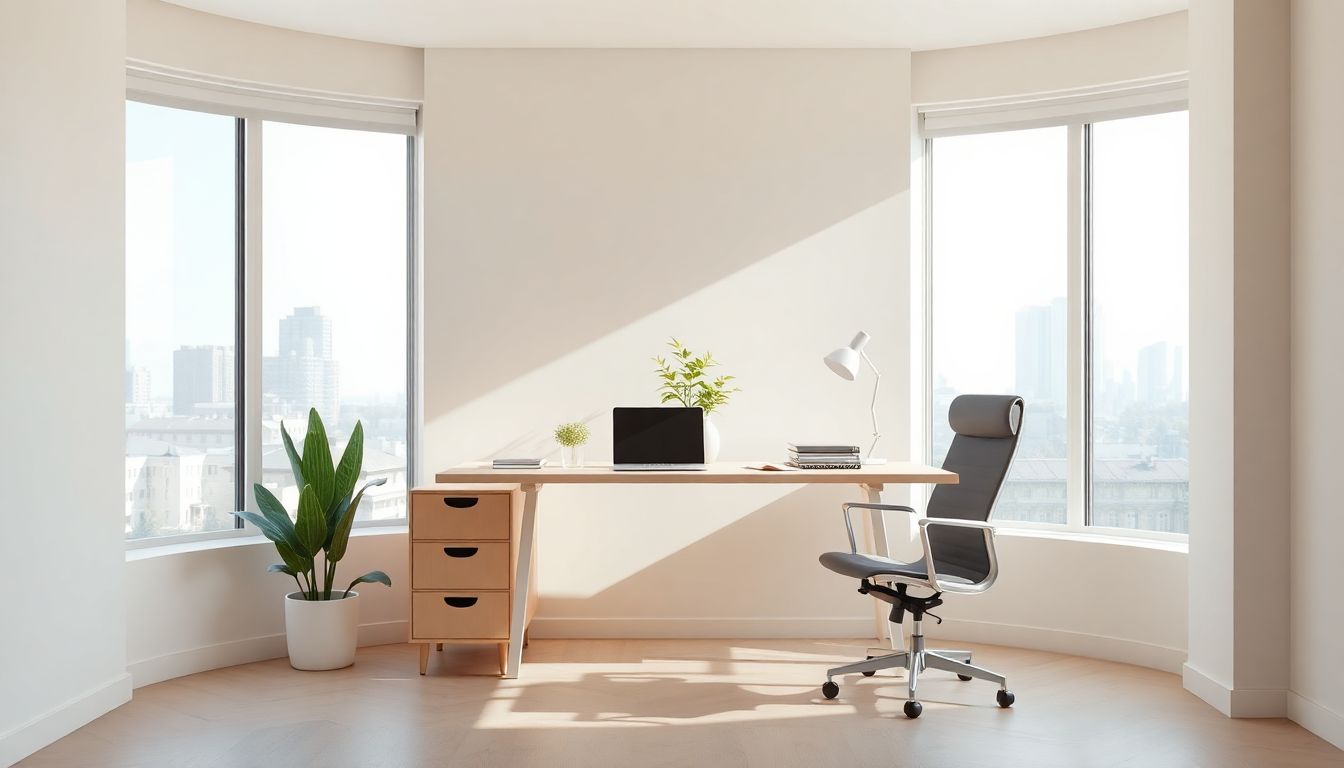
Ever felt drained just by walking into your office? Maybe the drab walls sap your energy. Or perhaps the uncomfortable chairs kill your focus. A poorly designed workspace impacts your work. But it doesn’t have to be that way! With tools like Office.com, you can transform your office into a haven. A well-planned interior is vital. It boosts productivity, betters well-being, and cultivates positivity.
The Psychology of Space: How Interior Design Impacts Work
The way your office looks affects your mind. Colors, light, and layout all play a part. These factors shape how you feel and perform. A good design uses these elements wisely. It can create a productive and happy work environment. Get ready to unlock the secrets of office design.
Color Psychology in the Office
Colors do more than look pretty. They impact your mood and focus. Blue promotes calm and concentration. Green inspires relaxation and creativity. Red, use it sparingly, it boosts energy.
Actionable Tip: Paint your focus areas blue. Use green in break rooms for chill vibes.
The Importance of Natural Light and Views
Natural light is a mood booster. It helps regulate your body clock. Views of nature reduce stress. Lack of light can cause fatigue and sadness. Maximize natural light to energize your space.
Actionable Tip: Open blinds and arrange desks near windows. Add plants to bring the outdoors in.
Spatial Arrangement and Social Interaction
How your office is laid out affects teamwork. Open layouts encourage collaboration. Private spaces offer focus for solo work. Balance is key. Think about how people interact. Create spaces that support all work styles.
Ergonomics and Physical Well-being
Ergonomics matter more than you think. Good design prevents physical problems. It improves comfort. This, in turn, boosts productivity. Don’t ignore this. Prioritize your employee’s physical comfort.
Choosing the Right Furniture
The right furniture is an investment. Look for chairs with good back support. Get desks that adjust to different heights. These features prevent strain and discomfort. Consider standing desks too.
Actionable Tip: Use this checklist when buying furniture:
- Adjustable height and support
- Breathable materials
- Proper lumbar support
- Durable construction
Optimizing Workstation Setup
Set up your workstation for comfort. Position your monitor at eye level. Keep your keyboard and mouse close. Adjust your chair, so your feet rest flat on the floor. A good setup can help avoid pain and injury.
Actionable Tip: Follow this ergonomic setup:
- Adjust chair height
- Position monitor correctly
- Place keyboard and mouse within reach
- Ensure proper lighting
The Role of Movement and Activity
Sitting all day is bad for you. Build movement into your workday. Standing desks are a great idea. Encourage walking meetings. Take regular stretch breaks. Movement helps you stay alert and healthy.
Actionable Tip: Set reminders to stand and stretch. Create a walking route for meetings.
Maximizing Productivity Through Design
Design impacts your output. Reduce distractions, boost focus, and create zones. Use design to help people perform their best. Get the most from your workspace.
Minimizing Distractions and Noise
Noise kills concentration. Soundproof rooms for focused work. Use noise-canceling headphones. Designate quiet zones for deep thinking.
Actionable Tip: Use acoustic panels to absorb sound. Encourage quiet voices in open areas.
Creating Zones for Different Tasks
Separate spaces for different activities. Collaborative zones are great for teamwork. Individual workstations are better for solo projects. Relaxation areas offer a place to recharge.
Actionable Tip: Use furniture to define zones. Add partitions for privacy.
The Power of Biophilic Design
Bring nature indoors. Plants improve air quality. Natural light reduces stress. Natural elements boost cognitive function. These can make the space more inviting.
Leveraging Office.com for Workspace Setup
Office.com helps you plan your space. Use its tools to design layouts. Manage access, and boost teamwork. Get the most from your workspace design. Office.com is a great resource.
Utilizing Templates and Resources
Office.com provides templates. These can help with office layouts. You’ll find setups for meeting rooms too. These resources make planning easier. It provides a great foundation for your design.
Collaboration and Communication Tools
Office.com helps teams connect. Share ideas, give feedback, and manage projects. These tools ensure everyone is on the same page. It will simplify the design process.
Managing Access and Security
Control who enters your workspace. Secure data and resources. Office.com offers tools for access management. Protect your company’s assets.
Future-Proofing Your Office Design
Plan for the long term. Embrace hybrid work. Incorporate smart technology. Flexibility is key. A workspace should adapt.
Embracing Hybrid Work Models
Design for remote and in-office staff. Create meeting spaces with video conferencing. Ensure everyone has access to resources. These features help both groups connect.
Actionable Tip: Invest in good video conferencing equipment. Provide remote workers with stipends for home office setups.
Incorporating Technology for Smart Offices
Smart lighting saves energy. Smart climate control improves comfort. Automate tasks to streamline operations. Make your office efficient and user-friendly.
The Importance of Flexibility and Adaptability
Create spaces that can change. Modular furniture is easy to reconfigure. Adaptable layouts meet changing needs. The flexibility is key to staying relevant.
Actionable Tip: Choose furniture on wheels. Use partitions that are easy to move.
Conclusion
A well-designed office boosts productivity. It enhances well-being. It creates a positive environment. Office.com helps you achieve these goals. Take steps to optimize your workspace today.